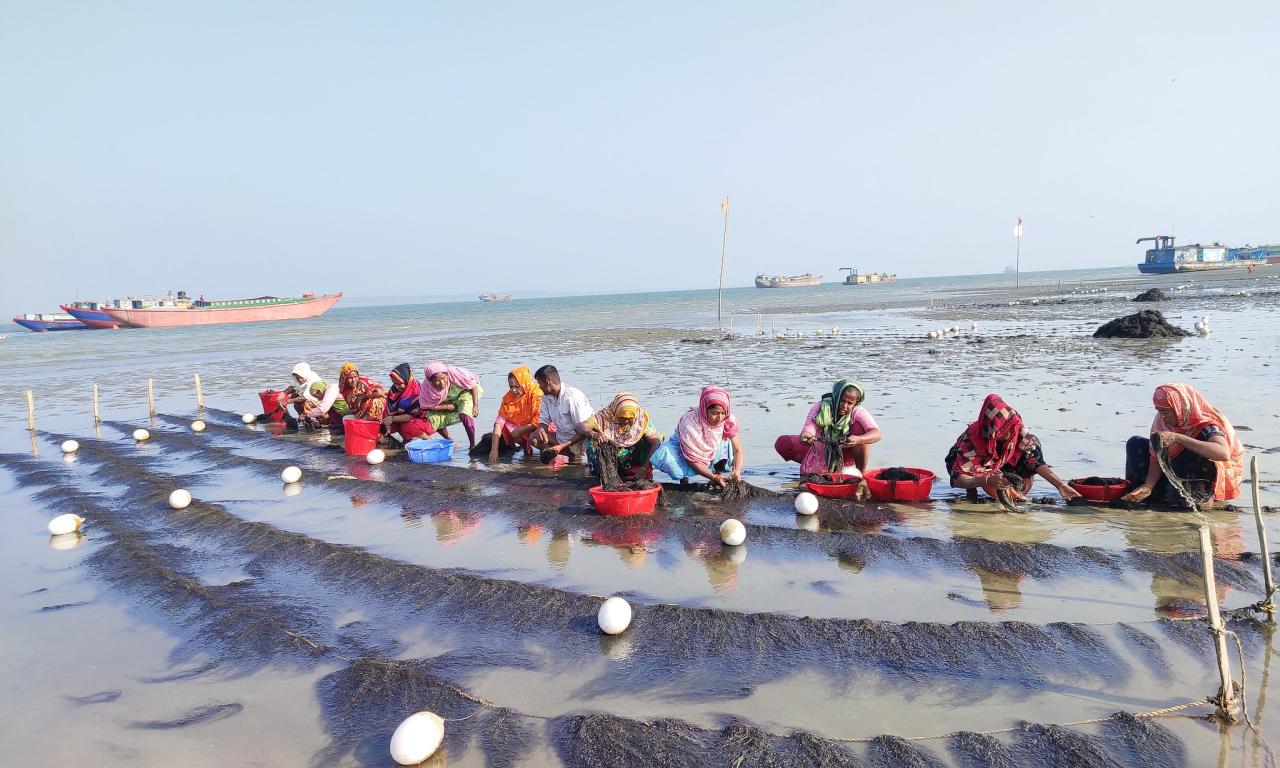
In the pursuit of sustainable development, the world is increasingly looking toward innovative solutions that address multiple challenges simultaneously—climate change, food security, economic inequality, and environmental degradation. One of the most promising yet under appreciated solutions lie beneath the ocean’s surface: seaweed. This humble marine plant has the potential to revolutionize food systems across the Global South, offering a sustainable, nutritious, and economically viable resource that can transform communities and ecosystems.
The Nutritional Powerhouse
Seaweed is a nutritional powerhouse, packed with essential vitamins, minerals, and bioactive compounds. Rich in iodine, calcium, magnesium, and vitamins A, C, and K, seaweed is a vital resource for combating malnutrition in regions where access to diverse and nutrient-rich foods is limited. Moreover, certain seaweed species are high in omega-3 fatty acids, which are crucial for heart health and typically found in high concentrations in fish. As the global population continues to grow, and as we face increasing pressure on land-based agriculture, seaweed presents an opportunity to diversify and enhance our food supply in a way that is both sustainable and scalable.
The Untapped Potential in the Global South
For coastal communities in the Global South, seaweed farming represents a significant opportunity for economic development. In countries across Africa, Asia, and the Pacific, where agriculture is often limited by arable land, freshwater availability, or climate variability, seaweed offers a resilient alternative. Unlike terrestrial crops, seaweed does not require land, fresh water, or fertilizers. It grows rapidly in the ocean, absorbing nutrients from the water and contributing to the health of marine ecosystems by improving water quality and providing habitats for marine life.
The potential economic impact of seaweed farming is staggering. The global seaweed industry is currently valued at over $6 billion, with estimates suggesting it could grow to $14 billion by 2025. Yet, despite this enormous potential, the vast majority of seaweed farming—approximately 99%—takes place in just six countries, predominantly in Asia. This presents a significant opportunity for the Global South to tap into this burgeoning market, diversify their economies, and empower coastal communities.
However, despite its immense potential, seaweed farming remains an underdeveloped industry in many parts of the Global South. One of the primary challenges is the lack of market access. While global demand for seaweed products is growing—driven by the food, cosmetics, pharmaceutical, and biofuel industries—many small-scale farmers struggle to connect with these markets. This disconnect is often due to inadequate infrastructure, limited access to market information, and the absence of organized value chains that can aggregate, process, and distribute seaweed products efficiently.
The Need for Systems-Level Thinking
To unlock the full potential of seaweed farming in the Global South, we must adopt a systems-level approach. This means looking beyond individual farms and considering the entire value chain—from seed to market. At present, the seaweed industry in many regions is fragmented, with small-scale farmers operating in isolation, often without the support needed to scale their operations or improve the quality of their products. To transform this system, several key areas need to be addressed.
Developing robust markets for seaweed products is essential. This involves not only connecting farmers with buyers but also investing in marketing and education to increase consumer awareness of the nutritional and environmental benefits of seaweed. Governments, businesses and development partners can play a critical role by facilitating market access, connecting farmers with local service providers, and investing in infrastructure that links producers with global markets.
One of the most significant opportunities in the seaweed sector lies in value addition. Currently, much of the seaweed produced in the Global South is sold as raw material, with little processing or refinement. This limits the economic benefits to farmers and leaves them vulnerable to price fluctuations. By investing in processing facilities and training farmers in value-added production—such as producing seaweed-based foods, cosmetics, biofuels, and fertilizers—communities can capture more of the economic value and create more resilient livelihoods.
The seaweed sector is in dire need of investment to drive innovation and scale production. This includes investment in research and development to identify and cultivate high-value seaweed species, develop new farming techniques, and create products that meet the needs of diverse markets. Additionally, financial support is needed to help farmers access the tools, equipment, and training required to modernize their operations and improve productivity.

Urgent Knowledge Gaps
While the potential of seaweed farming is clear, several urgent knowledge gaps must be addressed to fully realize this potential:
- Species-specific research: Despite the broad diversity of seaweed species, there is limited knowledge about the specific conditions under which different species thrive, particularly in the varied climates of the Global South. More research is needed to identify the most suitable species for cultivation, domestication and genetic improvement in different regions, focusing on those that offer the highest nutritional value and economic returns.
- Cultivation techniques: Current seaweed farming methods, while effective, are often labor-intensive and vulnerable to environmental changes. There is a critical need for research into more resilient and efficient cultivation techniques that can withstand the impacts of climate change, such as rising sea temperatures and ocean acidification. This includes developing multi-layer farming systems that optimize space and resources, as well as exploring indoor and land-based cultivation methods that can provide a more controlled growing environment.
- Disease management: As with other crops, seaweed farming is severely affected by pests and diseases, and this is likely exacerbated by the effects of climate change, In China, disease losses in Porphyra farming alone reached USD 410 million in 2021. There is a major need for research to better understand and diagnose the diseases that affect cultured seaweeds, and to develop practical biosecurity and disease management systems to limit their spread and impact.
- Post-harvest processing and preservation: The quality and shelf life of seaweed products can be significantly affected by post-harvest handling and processing. However, there is a lack of standardized protocols and technologies for preserving the nutritional and commercial value of seaweed after harvest. Research into innovative processing and preservation techniques, including the development of cost-effective, scalable drying, and packaging methods, is urgently needed.
- Market dynamics and consumer behaviour: Understanding the dynamics of global seaweed markets and consumer preferences is essential for developing effective marketing strategies. This includes research into the factors that influence consumer demand for seaweed products, as well as the potential for developing new markets, such as seaweed-based alternative proteins and functional foods. Additionally, studies on the socio-economic impacts of seaweed farming on coastal communities can help guide policy and investment decisions.
A Vision for the Future
The vision for seaweed farming in the Global South is one of transformation. It is about more than just increasing production; it is about creating a new kind of food system—one that is resilient, sustainable, and equitable. By embracing systems-level thinking and addressing the challenges of market access, value addition, and investment in R&D, we can unlock the full potential of seaweed farming to drive economic development, improve nutrition, and build climate resilience.
WorldFish is playing a pivotal role in this transformation. We will champion the establishment of a seaweed research consortium and through our partnerships across Africa, Asia, and the Pacific, we are conducting groundbreaking research to identify the most resilient and high-yielding seaweed species, developing innovative farming techniques, and creating pathways to market for small-scale seaweed farmers. By focusing on sustainable practices and value addition, we at WorldFish are helping to ensure that seaweed farming becomes a cornerstone of food security and economic development in the Global South.
Imagine a future where coastal communities across the Global South are thriving, supported by a vibrant seaweed industry that provides nutritious food, sustainable livelihoods, and environmental benefits. Imagine a future where seaweed is not just a niche product but a staple of global diets, recognized for its health benefits and its role in supporting sustainable development.
This future is within our reach, but it requires action and a commitment to innovation and collaboration. By working together—across sectors, borders, and disciplines—we can make the seaweed revolution a reality, transforming the Global South and creating a more sustainable future for all.
